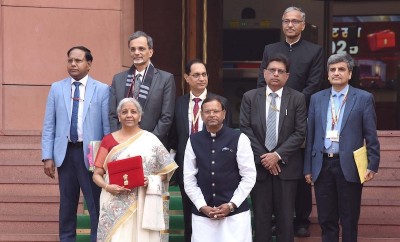
India to become world’s fourth-largest EV maker by 2030, but export success hinges on cost cuts: Report
New Delhi: India’s electric four-wheeler manufacturing capacity is poised to surge over tenfold — from 0.2 million units at present to 2.5 million by 2030 — positioning the country as the fourth-largest producer globally, trailing only China, Europe, and the United States, The Indian Express reported, citing a new report by the New York-based Rhodium Group.
Capacity to outpace domestic demand
Despite this projected expansion, India’s output could surpass local demand by 1.1 to 2.1 million units over the next five years.
Rhodium estimates that domestic demand for electric cars will grow from 0.1 million units in 2024 to between 0.4 million and 1.4 million by the end of the decade.
With total four-wheeler sales expected to touch 6 million by 2030, electric vehicle (EV) penetration may reach anywhere between 7 and 23 per cent.
In contrast, supply will significantly outstrip this demand. The 2.5 million-unit production capacity will consist of 0.2 million currently operational, 0.3 million ready but inactive, 1.3 million under construction, and 0.7 million in the pipeline.
“This far exceeds India’s projected 2030 EV demand, suggesting the potential for future exports,” Rhodium said in its Global Clean Investment Monitor report.
However, it cautioned that India’s automakers must reduce costs to compete with Chinese manufacturers in international markets.
Domestic market still key driver
In 2024–25, homegrown brands Tata Motors, MG Motor, and Mahindra dominated India’s EV market, together accounting for nearly 90 per cent of four-wheeler EV sales, as per Vahan dashboard data.
Despite rapid progress, India’s planned capacity still trails well behind China (29 million), the EU (9 million), and the US (6 million).
However, India edges ahead of Japan and South Korea to rank fourth, Rhodium observed.
Japan and South Korea currently have operational capacities of 1.1 million and 0.5 million units respectively, but both countries have limited capacity expansion plans. By 2030, Japan’s capacity is expected to reach 1.4 million, and South Korea’s 1.9 million.
EV policy mix: subsidies, localisation, and protectionism
According to Rhodium, India has taken a unique approach to EV sector development by combining industrial policy with consumer incentives and a protectionist trade stance.
The country’s subsidy programmes are tied to increased localisation, and manufacturers have been offered incentives to build advanced battery systems and components.
The government has also retained high import duties of 70–100 per cent on fully built EVs to protect local firms.
While this strategy has helped domestic manufacturing, it has also curtailed consumer options and kept prices high. Currently, nearly all of India’s EV production caters to the domestic market.
In comparison, Vietnam has witnessed much faster EV adoption, with penetration rising from 3 percent in 2022 to 17 percent in 2024 — largely driven by local automaker VinFast.
India emerging as global battery module hub
The report also highlighted India’s rise in the battery manufacturing space.
The country is showing substantial momentum in both cell and module production.
While most of India’s projected capacity stems from projects still under construction or recently announced — posing some risk — it is expected to become the top module manufacturer outside of China, the US, and Europe.
On the cell front, India is forecast to rank behind China (4,818 GWh), the US (1,169 GWh), and Europe (997 GWh), but ahead of South Korea, Japan, and Malaysia.
The global remainder, which includes India, is expected to collectively reach 567 GWh in cell capacity by 2030.
Support Our Journalism
We cannot do without you.. your contribution supports unbiased journalism
IBNS is not driven by any ism- not wokeism, not racism, not skewed secularism, not hyper right-wing or left liberal ideals, nor by any hardline religious beliefs or hyper nationalism. We want to serve you good old objective news, as they are. We do not judge or preach. We let people decide for themselves. We only try to present factual and well-sourced news.







